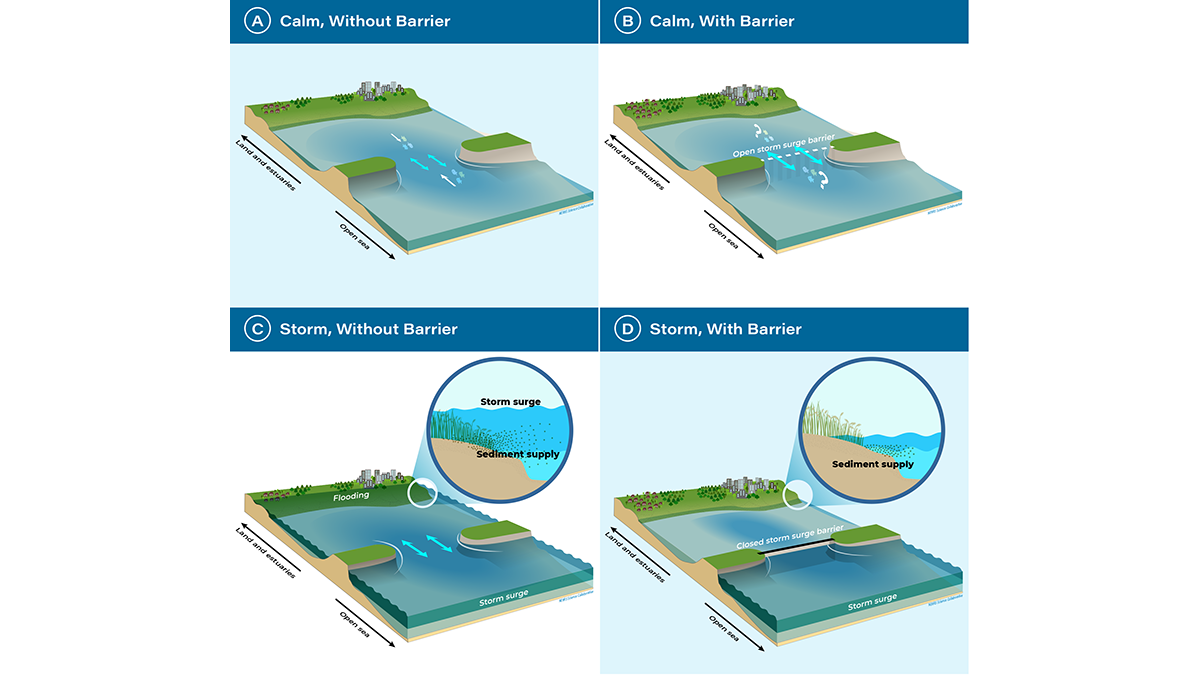Editors’ Highlights are summaries of recent papers by AGU’s journal editors.
Source: Earth’s Future
Decades of research show that ongoing sea-level rise will continue for centuries and possibly accelerate further without immediate and dramatic greenhouse gas emissions reductions. Estuaries are particularly vulnerable to sea-level rise and could be significantly impacted since many are urbanized, host important economic and social activities, and are home to important species of fish and migratory birds.
One response to protect estuaries from increasing flooding and salinization is building estuarine barriers, which can be closed whenever tidal levels exceed a certain threshold. Orton et al. [2023] review the impacts of such infrastructure on the physical environment, ecosystems, and human activities, and show that they remain insufficiently characterized. Barriers can create new conflicts between stakeholders. For example, in Venice, Italy, the ship traffic would require the barrier to be kept open as much as possible, whereas projected sea-level rise means that it would need to be closed more frequently.
As sea levels are rising, there is a risk that many barriers are built worldwide before we understand all their implications, including in the long-term. In this context, the research agenda proposed by the authors is timely and, if implemented, can generate multiple benefits in estuaries and for all human activities and ecosystems depending on them.
Citation: Orton, P., Ralston, D., van Prooijen, B., Secor, D., Ganju, N., Chen, Z., et al. (2023). Increased utilization of storm surge barriers: A research agenda on estuary impacts. Earth’s Future, 11, e2022EF002991. https://doi.org/10.1029/2022EF002991
—Gonéri Le Cozannet, Associate Editor, Earth’s Future

